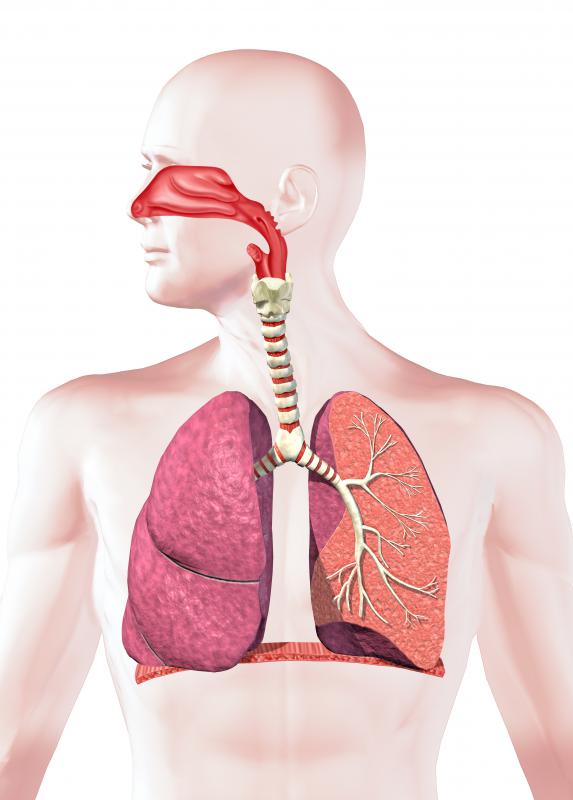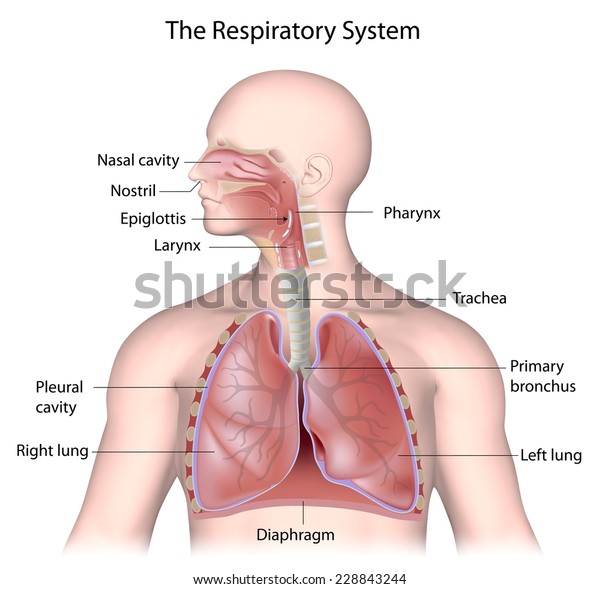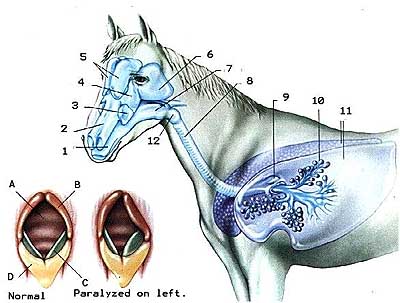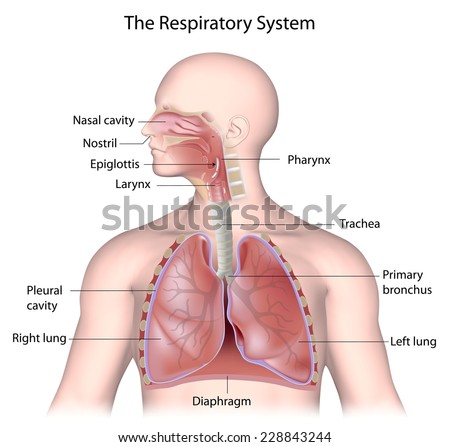38 respiratory system with labels and functions
Respiratory System Labeling Interactive Quiz Characteristics of Functions 10p Matching Game. New York (State) 21p Image Quiz. US City Skylines 9p Shape Quiz. ... This is an online quiz called Respiratory System Labeling Interactive. ... The States of the South (label all 16 states) 16p Image Quiz. Respiratory System - Medical Terminology for Healthcare Professions The cilia of the respiratory epithelium help to remove mucus and debris with a constant beating motion, sweeping materials towards the throat to be swallowed. This moist epithelium functions to warm and humidify incoming air. Capillaries located just beneath the nasal epithelium warm the air by convection.
Respiratory system structure and function - BBC Bitesize Respiratory system structure and function Passage of air into the lungs Air enters the body and is warmed as it travels through the mouth and nose. It then enters the trachea. The trachea divides...

Respiratory system with labels and functions
Free Respiratory System Worksheets and Printables The human body needs oxygen to breathe and function and live. Your children are going to love learning about the system that keeps us alive and breathing. ... Lungs Anatomy Worksheet - This fun worksheet not only has kids label the parts of the respiratory system but then use the labels to solve a crossword puzzle. How We Breathe Awesome ... Respiratory System Anatomy, Diagram & Function | Healthline The respiratory system, which includes air passages, pulmonary vessels, the lungs, and breathing muscles, aids the body in the exchange of gases between the air and blood, and between the blood and... Respiratory System Anatomy and Physiology - Nurseslabs The functions of the respiratory system are: Oxygen supplier. The job of the respiratory system is to keep the body constantly supplied with oxygen. Elimination. Elimination of carbon dioxide. Gas exchange. The respiratory system organs oversee the gas exchanges that occur between the blood and the external environment.
Respiratory system with labels and functions. Anatomy and Physiology of the Respiratory System Notes NOTES NOTES ANATOMY & PHYSIOLOGY RESPIRATORY SYSTEM osms.it/respiratory-anatomy-physiology RESPIRATORY SYSTEM Upper respiratory tract Nose, pharynx, associated structures Lower respiratory tract Larynx, trachea, bronchi, lungs Respiratory system function Gas exchange between blood, atmosphere Protection against harmful particles, substances pH homeostasis Vocalization Conducting vs ... Respiratory system diagram: Function, facts, conditions, and more The respiratory system allows people to breathe. It is made up of several organs and structures that transport air into and out of the lungs, exchanging oxygen with carbon dioxide. While the... The Respiratory System - Diagram, Structure & Function The function of the human respiratory system is to transport air into the lungs and to facilitate the diffusion of oxygen into the bloodstream. It also receives waste Carbon Dioxide from the blood and exhales it. Here we explain the anatomy of the airways and how oxygen gets into the blood. 13.2 Structure and Function of the Respiratory System Upper respiratory tract organs provide a route for air to move between the outside atmosphere and the lungs. They also clean, humidify, and warm the incoming air. No gas exchange occurs in these organs. Nasal Cavity The nasal cavity is a large, air-filled space in the above and behind the nose in the middle of the face.
Respiratory System: Functions, Facts, Organs & Anatomy Your respiratory system is the network of organs and tissues that help you breathe. This system helps your body absorb oxygen from the air so your organs can work. It also cleans waste gases, such as carbon dioxide, from your blood. Common problems include allergies, diseases or infections. Appointments 216.444.6503 Appointments & Locations What is the Respiratory System: Diagram and Function Respiratory System Functions During inspiration, the rib cage moves outwards and upwards and the diaphragm lowers increasing the volume of the thoracic cavity. This causes the internal pressure in the lungs to be lower than the atmospheric pressure. The difference in pressure forces air (introducing oxygen to the alveoli) in to the lungs. 5 Functions of Respiratory System | Respiratory Anatomy The following are the five key functions of the respiratory system. 1. Inhalation and Exhalation Are Pulmonary Ventilation—That's Breathing The respiratory system aids in breathing, also called pulmonary ventilation. In pulmonary ventilation, air is inhaled through the nasal and oral cavities (the nose and mouth). Organs of the Respiratory System And Their Functioning They carry out the work of supplying the body with oxygen and removing carbon dioxide. 1. The left lung is divided into 2 lobes (superior and inferior) while the right lung into 3 (superior, inferior and middle). 2. Each lung possesses a triangular organ called hilum; blood vessels, nerves, lymphatics and bronchi pass through the hilum. Alveoli
Respiratory System: Function & Physiology - Study.com The process of respiration begins at the nose and mouth, where air enters your body. You inhale and air travels down the back of the throat, the larynx, and into the trachea, a tube that runs down ... Functions of the Respiratory System The respiratory system is made up of multiple small and large organs, bones, and muscles, which all work together to accomplish each task of the system. Broadly classified into the upper and lower respiratory tracts, here are the functions of the different parts: Upper Respiratory System Function of the Nose Respiratory System: TEAS || RegisteredNursing.org The upper respiratory system: The part of the respiratory system that includes the nose and nares, also referred to as the nostrils, the pharynx, and the larynx. The lower respiratory system: The part of the respiratory system that includes the trachea, the bronchi, the bronchioles, the lungs, and the alveoli. Pharynx: The pharynx is the part ... Respiratory system: Anatomy and functions | Kenhub The main function of the respiratory system is pulmonary ventilation, which is the movement of air between the atmosphere and the lung by inspiration and expiration driven by the respiratory muscles. The respiratory system works as a whole to extract the oxygen from the inhaled air and eliminate the carbon dioxide from the body by exhalation.
Respiratory System Parts and Functions for Kids - HowForKids Respiratory System: Lungs Function The lungs take up much of the space inside our chest (thorax). They are protected by the rib cage. This "cage" is formed by the ribs, and it surrounds the lungs to keep them safe. Below the lungs there's the diaphragm. It is a muscle that alternately rises and drops during the breathing process.
Respiratory System: How We Breathe - ThoughtCo The respiratory system is composed of a group of muscles, blood vessels, and organs that enable us to breathe. The primary function of this system is to provide body tissues and cells with life-giving oxygen while expelling carbon dioxide. These gases are transported via the blood to sites of gas exchange (lungs and cells) by the circulatory ...
22.1 Organs and Structures of the Respiratory System The gas exchange occurs in the respiratory zone. Conducting Zone The major functions of the conducting zone are to provide a route for incoming and outgoing air, remove debris and pathogens from the incoming air, and warm and humidify the incoming air. Several structures within the conducting zone perform other functions as well.
16.2: Structure and Function of the Respiratory System Respiration by the respiratory system supplies the oxygen needed by cells for aerobic cellular respiration and removes the carbon dioxide produced by cells during cellular respiration. Respiration by the respiratory system actually involves two subsidiary processes. One process is ventilation or breathing.
Anatomy of the Respiratory System - Health Encyclopedia - University of ... The lungs take in oxygen. Your body's cells need oxygen to live and carry out their normal functions. The lungs also get rid of carbon dioxide, a waste product of the cells. The lungs are a pair of cone-shaped organs made up of spongy, pinkish-gray tissue. They take up most of the space in the chest (thorax).
Respiratory System Organs and Their Functions - New Health Advisor Respiratory System Organs and Their Functions The respiratory system plays a vital role in the body, by providing your cells with much needed oxygen, as well as excreting carbon dioxide, which can be deadly if allowed to accumulate. Major parts of the system include the airways, the lungs, and the muscles of respiration.
Respiratory System | Interactive Anatomy Guide - Innerbody Respiratory System. The cells of the human body require a constant stream of oxygen to stay alive. The respiratory system provides oxygen to the body's cells while removing carbon dioxide, a waste product that can be lethal if allowed to accumulate. There are 3 major parts of the respiratory system: the airway, the lungs, and the muscles of ...
Diagram Of The Respiratory System With Labels Stock Photos, Pictures ... Medicine, clinic, hospital, social media, online, health. diagram of the respiratory system with labels stock illustrations. Isolated Icons with internal organs in vector illustration. Lungs, Internal organs - three-dimensional anatomy chart with inner organs and labeled with their names - black background. Internal organs - three-dimensional ...
The 12 parts of the respiratory system (characteristics and functions) Its main function is to bring air into the lungs when we inhale and expel it when we exhale. And since there are two lungs, the trachea, in its lowest region, bifurcates in two, giving rise to two tubes and each of them enters one of the lungs. 6. Lungs The lungs are the center of the respiratory system.
Respiratory System - Definition, Function and Parts - Biology Dictionary Respiratory System Function Primary Function The primary function of the respiratory system is gas exchange. Animal cells use oxygen and produce carbon dioxide as a byproduct. Not only do animals need a way to get more oxygen into the cells, but they also need a way to remove carbon dioxide. The respiratory system provides this functionality.
Respiratory system | the lung association This chart of the RESPIRATORY SYSTEM shows how you breathe. Breathing is the process that brings oxygen in the air into your lungs and moves oxygen and through your body. Our lungs remove the oxygen and pass it through our bloodstream, where it's carried off to the tissues and organs that allow us to walk, talk, and move.Our lungs also take carbon dioxide from our blood and release it into the ...
Respiratory System Anatomy and Physiology - Nurseslabs The functions of the respiratory system are: Oxygen supplier. The job of the respiratory system is to keep the body constantly supplied with oxygen. Elimination. Elimination of carbon dioxide. Gas exchange. The respiratory system organs oversee the gas exchanges that occur between the blood and the external environment.







Post a Comment for "38 respiratory system with labels and functions"